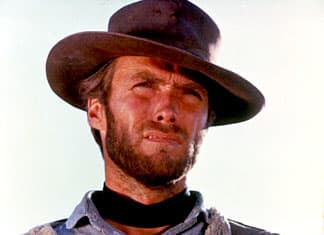The convenient "spaghetti Western" tag has not been kind to Sergio Leone. Originally meant to describe a spate of B-quality westerns filmed in Italy for the Italian market in the 1950s and early '60s, Sergio Leone's great epics have come to epitomise this movement simply because his were the only Italian-made westerns ever to be released in North America. But the legacy of his "Dollars" trilogy (A Fistful of Dollars, For A Few Dollars More, and this epic) demonstrates that he yearned to be David Lean almost more than he emulated John Ford. His trademark contrast of close-up faces and wide, slow panoramas serve to intensify the drama as well as provide epic grandeur to his grey-area morality tales. Clint Eastwood returns for a third run with Leone, this time as Blondie (aka the Good), despite American studio attempts to label him "the man with no name," in an effort to connect the "Dollars" films in a way that Leone otherwise didn't intend. (They were separate films, not sequels.) Although not particularly "good," Blondie is the moral contrast to his cohorts Angel Eyes (aka the Bad, played by Lee Van Cleef) and Tuco (the Ugly, Eli Wallach, who played a similar role in The Magnificent Seven and feared getting typecast). This nefarious trio seek a fortune in gold, but their quest is a meandering one through an American landscape battered by the Civil War. Leone, filming in Italy and Spain, and dealing with three stars with limited Italian, invokes the American West as seen through the westerns he loved grand, full of potential but also danger, an untamed land where even an outlaw could stake a claim. Given the fact that it wasn't intended initially for an American audience it was only released Stateside two years after its Italian premiere Leone's vision fits remarkably alongside that of Ford (The Searchers, Rio Grande). This deluxe DVD issue restores for the first time the film's original Italian running time (almost, print damage required a few snips), allowing Leone's tale to unfold at a stately three hours. And it's masterful. It looks and sounds better than anyone has ever seen it, and one simply marvels at the breadth of Leone's accomplishment. But it almost stands alone as a history piece instead of a link to contemporary film history that's because, aside from fans like Robert Rodriguez and Quentin Tarantino, Leone's influence, his style, and his vision have all but vanished from contemporary cinema, digitally replaced by computer-generated special effects. Unusually, what's clearer now is the impact that composer Ennio Morricone has had on the contemporary music scene if he was starting today, he'd live in Chicago and his post-rock explorations would be considered landmark. Instead, he adds an integral and unusual element to this surrealistic vision. This two-disc set goes all out in honouring Leone and this film. In addition to 18 minutes of restored footage (which had to be newly voiced by Eastwood, Wallach and other surviving cast members), featurettes explore Leone's style, his vision of the western, a brief Civil War documentary, the reconstruction and restoration of the film and the influence of Morricone. Even the original trailer which incorrectly refers to Wallach's Tuco as "the Bad" and Van Cleef's Angel Eyes as "the Ugly" turns out to be revealing. Sadly, the same can't be said for film scholar Richard Schickel's laconic and dull commentary. But with a film like this, the best thing to do is shut up and watch. (MGM)
The Good, The Bad and The Ugly
Sergio Leone

BY James KeastPublished Jun 1, 2004